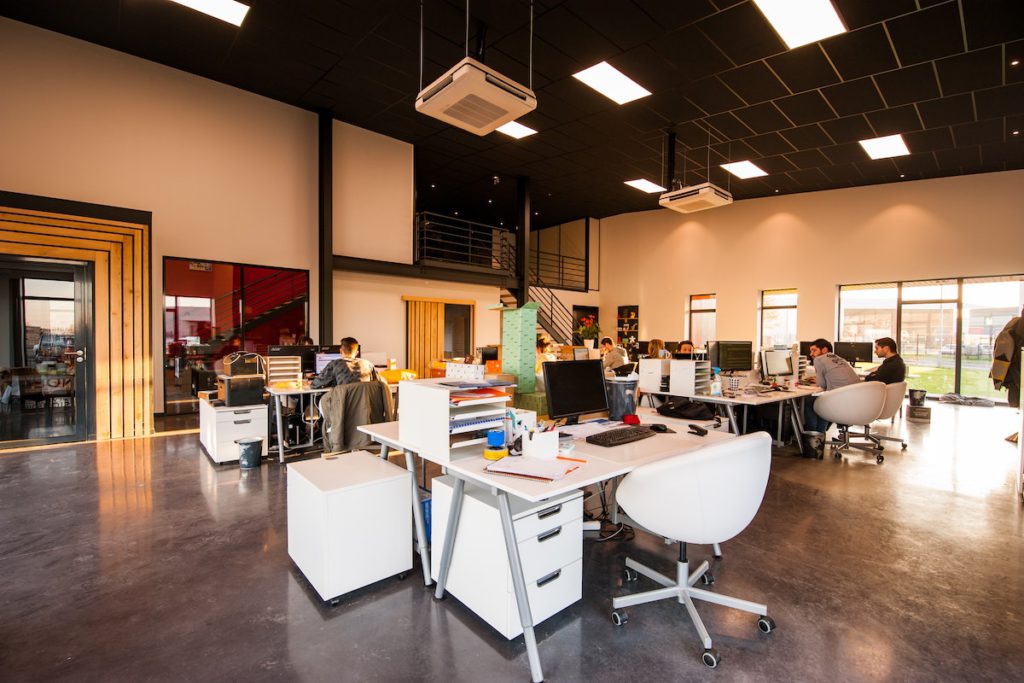We are a team of researchers that came together before COVID-19 to examine the growth of coworking spaces in cities, and we are following the evolution of those spaces during the time of the pandemic. We are now calling on policymakers to take advantage of this moment to envision how diverse models of coworking spaces can play a role in supporting new, flexible, hybrid models of work, in ways that strengthen our inner cities and serve the communities that live and work in them. As Britain shifts towards more flexible models of work, our research suggests policymakers should now seriously consider the role coworking spaces can play in revitalising the economies and communities of cities.
While the operators of spaces are betting that their prominence is growing, whether recovery from the pandemic gives coworking spaces new centrality to modern working lives remains to be seen. Coworking and remote working were growing before COVID-19, but demand for coworking spaces has suffered now, with spaces struggling to offer secure desks, gear, and opportunities for professional networking. For example, many businesses were working from home as a result of COVID-19 lockdowns, in March 2020, coworking space operators saw nearly 50% less foot traffic.
The rise of people working from home or remotely due to COVID-19 lockdowns has limited the growth of the market. When your whole business model is built around people working outside of their homes, the worst-case scenario is a global pandemic in which nearly everybody is working outside. The data is clear, and surveys conducted around the pandemic showed workers did not want to go back to the office full-time, but they equally did not want to exclusively work from home. The pandemic has challenged a lot of assumptions about where, how, and when people might be working.
The use of shared workspaces has increased dramatically as a result of the pandemic, which has changed how many businesses operate. At the same time, co-working spaces have contributed–to varying degrees–to pandemic recovery, providing places for collaboration or group work within a broader increase in flexible and mixed work practices. COVID-19, one of the most important benefits of coworking spaces is the interactions and sense of community that they enable.

The notion of working at one of the 160 or so only coworking spaces seemed nearly ridiculous in the middle of a pandemic. For businesses, one further argument emerging amid COVID-19 was that coworking spaces provided an excellent alternative for workers who were (partly) cutting back on their commuting, but who still wanted to have social working spaces closer to their homes. During the COVID-19 pandemic, the staff at StartDock also felt an increased demand for desks in coworking spaces by enterprise eyes in the longer term. The pandemic has also inspired many companies to look to coworking spaces as a practical alternative to traditional workspaces while grappling with how to figure out the future of work.
Continued assistance in understanding and explaining the changes in StartDock since the outbreak of COVID-19. By interviewing both the owner and the community manager, we sought insight into 1) strategic choices StartDock made when dealing with COVID-19, and 2) the perspective StartDock had regarding how its coworking community responded to the pandemic.
Despite the uncertainty surrounding the COVID-19 pandemic, markets demonstrated the need for coworking, or flexible workspaces would continue to increase. Despite the negative impacts that the pandemic has had on the growth of coworking spaces, the sector is expected to continue growing and prospering in the post-pandemic world.
The COVID-19 pandemic is speeding up previous trends, which are changing where what, and how much office space is needed by the marketplace. Four converging trends–only one of which has been accelerated substantially by the COVID-19 pandemic–are redefining the office market at a pace far faster than builders and asset managers are responding. WeWork, a leading player in the global office space market, has tailored its strategy to the model in multiple ways, both to address the challenges posed by COVID-19 and anticipate aftershocks.
In the aftermath of the pandemic, co-working companies will evolve to address that demand, offering a tailored, just-in-time office space and an employee experience businesses need to satisfy increasingly diverse, distributed, demanding workforces. While organizations are still evaluating how coworking will fit in with their working strategies going forward, the benefits of offering employees a new model and space for completing work-related tasks are difficult to ignore. As we work with clients to evaluate and plan for their evolving property and space needs, workplace strategy and serviced office design leaders at SmithGroup believe shared workspaces and co-working opportunities will continue to grow in popularity, becoming powerful, critical components supporting the company’s corporate and space needs.
More than an office, co-working and flexible spaces are also favourites for small-business owners looking for collaboration, flexibility, and growth. There are coworking companies that just provide a space for meetings, allowing organizations to host larger conferences. Some organizations have moved toward combining offices and offering coworking memberships and flexible spaces to better support telecommuters or employees that want to work out of their offices for 1 or 2 days per week.
This growing interest may be because many coworking operators have now evolved from sharing office spaces for startups and small businesses into providing outsourced, full-service office space and services for larger to mid-sized businesses. In other cases, a coworking firm will fully renovate the space for the business, offer office services–including IT, reception, concierge, home cleaning, and mailing services–and manage it throughout its rental term. Coworking spaces also likely will act as a central hub for an ecosystem of third-party, on-site providers that offer additional services directly to businesses and their employees, like wellness and other amenities such as wifi, furniture, a cafeteria, and community events, on both a part-time and full-time basis.
